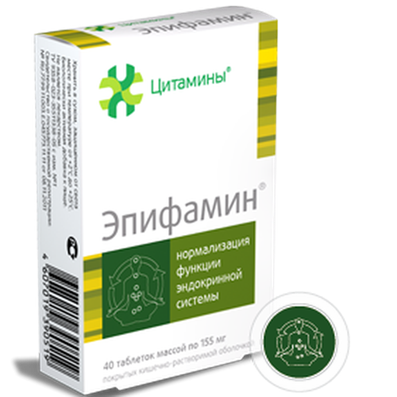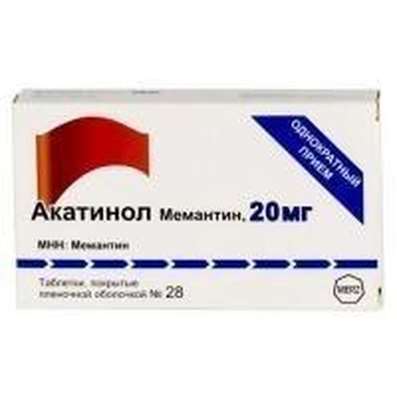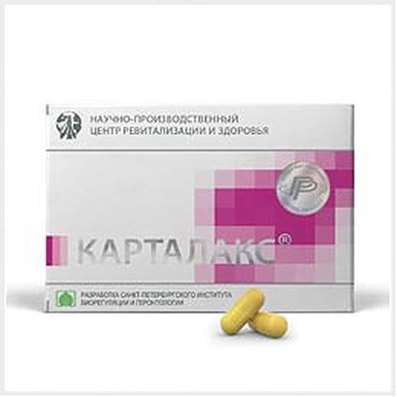Instruction for use: Snup
I want this, give me price
Active substance: Xylometazoline
ATX Code R01AA07 Xylometazoline
Pharmacotherapeutic group:
Decongestant agent [alpha agonists]
Decongestant agent [decongestant]
The nosological classification (ICD-10)
H65 purulent otitis media
Inflammation of the middle ear
Allergic otitis media
H68 inflammation and blockage of the ear [Eustachian] pipes
Eustachian, acute evstahiit, Qatar Eustachian tubes, Evstaheit
J00 Acute nasopharyngitis [runny nose]
Viral rhinitis, Inflammation of the nasopharynx, Inflammatory diseases of the nose, purulent rhinitis, Nasal congestion, Nasal congestion with colds and flu, The difficulty of nasal breathing, The difficulty of nasal breathing for colds, Difficulty in nasal breathing, Difficulty in nasal breathing in colds, nasal, hypersecretion, cold, ARI with rhinitis phenomena, coryza, Acute rhinitis of various origins, Acute rhinitis with thick purulent mucous exudate, Acute nasopharyngitis, Swelling of the mucosa of the nasopharynx, Rhinitis, rhinorrhea, Infectious-inflammatory diseases of ENT organs, heavy cold, rhinopharyngitis, nasopharyngitis
J01 Acute sinusitis
Inflammation of the sinuses, Inflammatory diseases of the paranasal sinuses, Purulent inflammation of the paranasal sinuses, Infectious-inflammatory diseases of ENT organs, Infection of the sinuses, Combined sinusitis, Exacerbation of sinusitis, Acute inflammation of the paranasal sinuses, Acute bacterial sinusitis, Acute sinusitis in adults, Subacute sinusitis, acute Sinusitis, sinusitis
J06 Acute upper respiratory infections of multiple and unspecified
Frequent colds viral diseases, Infections of the upper respiratory tract, Acute respiratory disease influenza character, for colds Pain, Acute colds,Cold, respiratory infection,Seasonal colds, Pain in infectious and inflammatory diseases of the upper respiratory tract, Bacterial infections of the upper respiratory tract, Bacterial respiratory infections, Viral disease of the respiratory tract, Viral respiratory tract infections, Inflammatory disease of the upper respiratory tract, Inflammation of the upper respiratory tract disease, Inflammation of the upper respiratory tract illness with difficult sputum, Inflammatory airway disease, Secondary infections with colds, Shortness of sputum in acute and chronic respiratory diseases, Upper respiratory tract infection, Infections of the upper respiratory tract, Respiratory Tract Infections, Infections of the respiratory tract and lungs, Infectious-inflammatory diseases of the upper respiratory tract, Infectious-inflammatory diseases of the upper respiratory tract and ENT-organs, Infectious-inflammatory diseases of the upper respiratory tract in children and adults, Infectious-inflammatory diseases of the upper respiratory tract, Infectious inflammation of the airways,respiratory infection, Qatar upper respiratory tract, Catarrh of the upper respiratory tract, Catarrhal disease of the upper respiratory tract, Catarrhal symptoms of the upper respiratory tract, Coughing with a cold, SARS, ARI, ARI with rhinitis phenomena, Acute respiratory infection, Acute infectious and inflammatory disease of the upper respiratory tract, Acute respiratory disease, Sore throat or nose, Respiratory viral infections, Respiratory diseases, Respiratory infections, Recurrent respiratory infections, Secondary infection with influenza, cold in the chest, Feverish condition with flu
J30 Vasomotor and allergic rhinitis
Allergic rinopatiya, Allergic rhinosinusopathy, Allergic respiratory diseases, Allergic rhinitis, nasal allergy, Seasonal Allergic Rhinitis, Vasomotor rhinitis, Long-allergic rhinitis, Perennial allergic rhinitis, Perennial allergic rhinitis, Year-round or seasonal allergic rhinitis, Year-round allergic rhinitis nature, Rhinitis allergic vasomotor, Exacerbation of pollen allergy in the form of Syndrome rinokonyunktivalnogo, Acute allergic rhinitis, Edema of the nasal mucosa, Edema of the nasal mucosa, Swelling of the mucosa of the nasal cavity, Swelling of the nasal mucosa, Swelling of the nasal mucosa, pollen disease, Permanent allergic rhinitis, rhinoconjunctivitis, rhinosinusitis,rhinosinusopathy, Seasonal allergic rhinitis, Seasonal Allergic Rhinitis, Haymarket rhinitis, Chronic allergic rhinitis, Allergic respiratory diseases
J30.1 Allergic rhinitis caused by the pollen
hay fever, Hypersensitivity to pollen, Polypoid allergic rhinosinusitisá Seasonal hay fever, Seasonal rhinitis
J999 * Diagnosis of Respiratory Diseases
bronchography, bronchoscopy, Diagnostic procedures in the nasal passages, Diagnostic Study of the bronchi, laryngoscopy, Preparing for rhinoscopy, Preparing the patient for bronchoscopy and / or bronhografii, Preparing the patient for bronchoscopy or bronhografii, Preparing the patient for diagnostic procedures in the nasal passages, Preparing the patient for diagnostic procedures in the area of the nasal passages, rhinoscopy, Visualization of the chest cavity, Chest X-ray, Mediastinoscopy
Composition
spray for nasal administration of 1 ml
active substance:
Xylometazoline hydrochloride 0.5 mg/ 1 mg
Excipients: sea water - 250 mg; potassium dihydrogenphosphate - 0.45 mg; Purified water - 754.35 and 753.85 mg
the theoretical total weight - 1005.3 mg
Description
Solution: colorless, transparent.
pharmachologic effect
antikongestat, vasoconstrictor
pharmacodynamics
Xylometazoline belongs to a group of local vasoconstrictor alpha-Adrenomimeticalkie activity, causes narrowing of the blood vessels of the nasal mucosa, eliminating edema and congestion of the nasal mucosa and restores patency of the nasal passages, nasal breathing easier.
The drug comes in a few minutes after application and lasts for several hours.
Pharmacokinetics
When applied topically, the drug is practically not absorbed, so its concentration is very small (by modern analytical methods are not defined) in the blood plasma.
Indications of Snup
acute respiratory diseases with the phenomena rhinitis (runny nose);
Acute allergic rhinitis, hay fever, sinusitis, evstahiit, otitis media (as part of combination therapy to reduce swelling of the mucous nasopharynx);
to facilitate rhinoscopy and other diagnostic procedures in the nasal passages.
Contraindications
hypersensitivity;
arterial hypertension;
tachycardia;
expressed atherosclerosis;
glaucoma;
atrophic rhinitis;
hyperthyroidism;
surgical intervention on meninges (in history);
pregnancy;
Children under 6 years (0.1% solution);
Children under 2 years (0.05% solution).
Precautions: Sugar rafineries diabetes; severe cardiovascular disease (including coronary heart disease); prostatic hyperplasia; pheochromocytoma; porphyria; hyperthyroidism; breastfeeding; simultaneous reception of MAO inhibitors; tricyclic antidepressants and other medications that increase blood pressure; increased sensitivity to adrenergic drugs, accompanied by insomnia, dizziness, arrhythmia, tremor, elevated blood pressure.
Side effects
Frequent and / or long-term use - irritation and / or dryness of the nasal mucosa, burning, paresthesia, sneezing, hypersecretion.
Seldom - swelling of the nasal mucosa, palpitations, tachycardia, arrhythmias, increased blood pressure, headache, vomiting, insomnia, blurred vision; depression (with prolonged use at high doses).
Interaction
Incompatible with MAO inhibitors and tricyclic antidepressants.
Dosage and Administration
Intranasal.
Snup spray for nasal administration, 0.05%. Children aged 2 to 6 years - 1 injection per nostril (can be repeated if necessary), up to 3 times a day.
Adults and children from 6 years - 2 injections in each nostril up to 3 times a day.
Snup® spray for nasal administration, 0.1%. Adults and children from 6 years - 1 injection per nostril (can be repeated if necessary), up to 3 times a day.
Snup®, spray for nasal administration, 0.1% should not be used in children under 6 years.
The drug should not be used more than 3 times per day, duration of the course no more than 7 days.
Before use, clean the nasal passages.
Remove the protective cap. Before first use, press several times on the rim of the nozzle until a uniform cloud "fog." Vial is ready for use.
When applying the nozzle to enter into the nasal cavity and pressing once on the ring. Bottle keep upright. Do not spray horizontally or downwards. Immediately after the injection is recommended for easy inhale nose. After use, close the bottle screw cap.
Each vial is to be used individually.
Overdose
Symptoms: increased side effects.
Treatment: symptomatic, under the supervision of a physician.
special instructions
It should not be used for a long time, for example in chronic rhinitis.
Seawater, which is part of the drug, helps to maintain the normal physiological state of the mucous membrane of the nose due to the ability to improve the function of the ciliated epithelium and mucus production in the normalization of the mucosa goblet cells.
Effects on ability to drive vehicles and mechanisms. Subject xylometazoline dosage regimen does not affect the concentration of attention and speed of psychomotor reactions.
release Form
Nasal Spray 0.05% and 0.1%. The PE-bottle with 15 ml of the spray system (150 doses). 1 fl. In the paper cartons.
Storage conditions of Snup
The temperature is not higher than 25 ° C.
Keep out of the reach of children.
Shelf life of Snup
5 years. The contents of the vial is sterile, preservative-free. After opening the vial the drug should be used within 12 months.
Do not use beyond the expiration date printed on the package.
Available without prescription

 Cart
Cart





